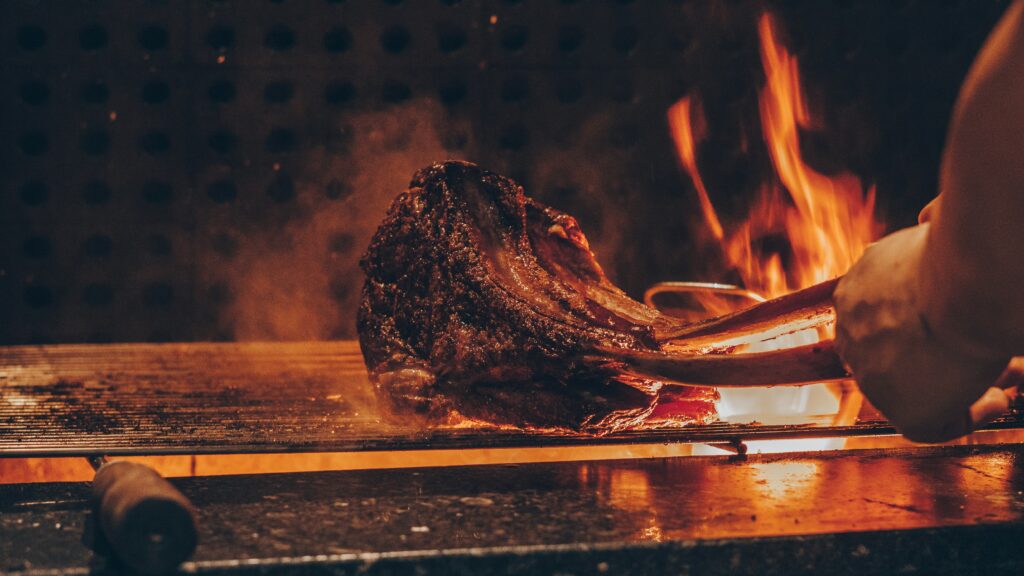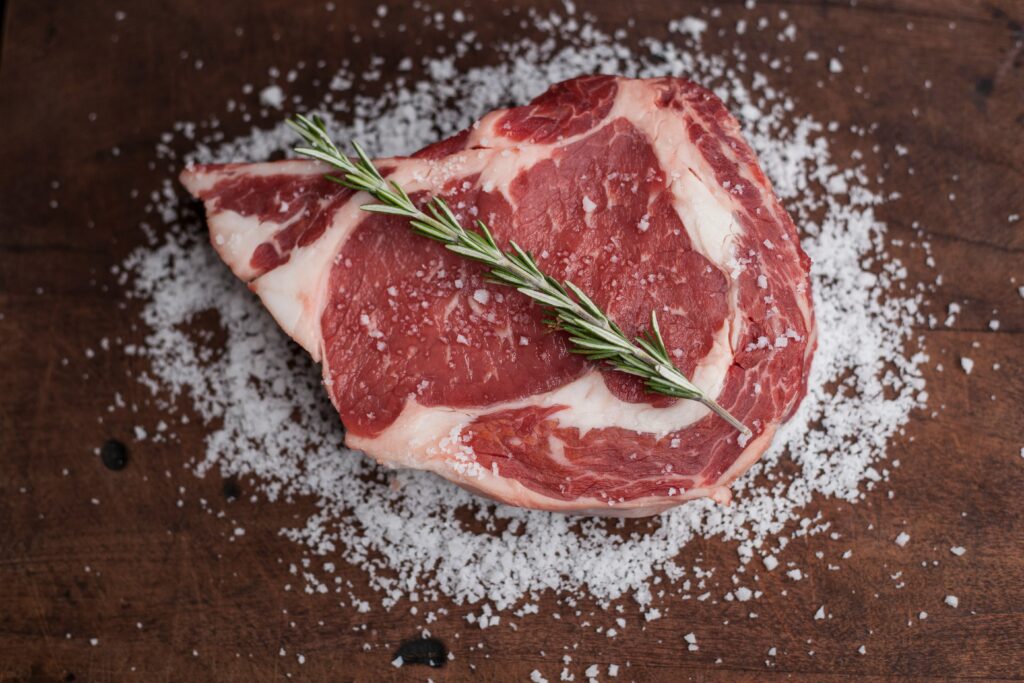How to Cook the Perfect Steak

Crafting the perfect steak is akin to performing a culinary ballet. Precision, timing, and a splash of personal flair—all essential.
Whether you’re a seasoned grill master or a novice looking to impress, the journey to achieving that juicy, tender, and flavour-packed masterpiece starts with understanding the basics and sprinkling in a few trade secrets.
Here’s how you can elevate your steak game from mundane to Michelin-worthy:
Selecting Your Steak
First off, let’s talk about the canvas.
Not all cuts are created equal. For a truly memorable experience, opt for high-quality cuts like Ribeye, Filet Mignon, or Sirloin. Having these steaks cut straight off the carcass is always worth the extra effort.
Look for marbling—that’s chef lingo for those little fat flecks within the meat. It’s not just fat; it’s flavour waiting to melt into your steak, ensuring it’s as juicy as a soap opera storyline.
Pro tip: Avoid any vacuum-packed, sauce-soaked steaks. The cuts here are usually the bottom of the barrel.
To Season or Not to Season

Now, for the million-dollar question: when to season?
If you’re a “season right before cooking” enthusiast, I respect your life choices but consider this: seasoning your steak with good ol’ salt and pepper a few hours in advance can enhance the flavour.
It’s like giving your steak a pep talk before the big game.
Stick it in the fridge and take it out a little before you start grilling. The goal is to keep it firm and get a decent sear while allowing all the seasoning to get sucked right in to the steak.
The Heat Is On
Whether you’re a grill aficionado or a skillet supporter, the key is getting that cooking surface scorching hot.
A hot grill or pan ensures your steak gets a beautiful, caramelized crust, sealing in those mouth-watering juices.
If your smoke alarm isn’t cheering you on, you’re probably doing it wrong.
Flipping the Script
There’s a myth out there that says you should only flip your steak once. Let’s debunk that right now.
Flipping your steak every minute or so can actually create an even crust and prevent overheating.
Think of it as giving each side equal attention.
The Touch Test: Steak Whispering

Forget poking your steak with a thermometer; let’s keep it between us.
The touch test is where it’s at. Press the base of your thumb—feel that? That’s what rare feels like. Now touch your middle finger to your thumb and press again. That’s medium-rare.
Your steak, your rules, but remember: you can always cook it more, but you can’t uncook it.
Pro tip: Aim for medium-rare to impress both the steak purists.
Resting
Once your steak is done, resist the temptation to cut into it immediately.
Rest it for as long as you’ve cooked it.
This allows the juices to redistribute while also allowing all the tensed fibers to relax making sure the steak is more tender and ensuring each bite is as flavourful as the last.
Think of it as the steak taking a spa day before the grand finale.
To Sauce or Not to Sauce
Finally, the debate on whether to sauce.
If you’ve nailed the steps above, your steak should be bursting with flavour. But if you’re a sauce aficionado, a dab of homemade herb butter or a drizzle of red wine reduction can add an extra layer of sophistication.
Make sure to ADD to your steak and never take away from the steak itself.
Achieving the perfect steak is about balance, care, and a touch of bravado. Experiment with cuts, seasonings, and cooking methods. Each steak is a new adventure, an opportunity to refine your craft.
And remember, at the end of the day, it’s not just about the steak; it’s about the experience of creating something truly remarkable. So, fire up that grill, invite some friends over, and let the steak do the talking.





